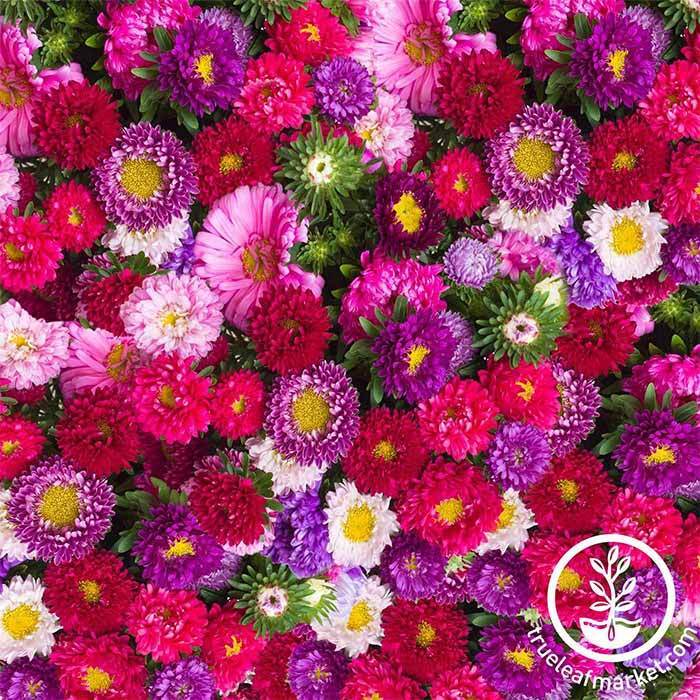 |
Written By Lara Wadsworth |
Just because you live “up north” doesn’t mean you have to sacrifice beauty! The perennials that thrive in zones 2-5 often have some of the best blooming seasons available due to the dormancy period they undergo during the wintertime. Plant a few or all of these ornamental perennial plants in your northern garden this year and enjoy them for decades!
Perennial Plants for Zones 2-5
Lupine (Lupinus texensis or Lupinus polyphyllus)
This mountain native is made to thrive in cooler climates. The robust foliage and vibrant flowers that come from lupine seeds tend to thrive best in northern gardens and even struggle to grow in any zone warmer than 7. If you’ve been hiking in the fields or mountains from the East to the West, you know how nostalgic and beautiful lupine plants can be. Add one of the best northern bloomers to your perennial flower bed this year!
Columbine (Aquilegia canadensis)
Columbine is a classic northern flower. These spring and summer bloomers can be found to have every color and pattern desired. Solid blue, bicolored white and pink, and more! They are low-maintenance and thrive in northern, mountainous climates. These spidery blooms delight everyone who sees them! They are perfect for perennial flower beds and even large decorative planters.
Sedum (Sedum spp.)
The succulent rage has exited the houseplant realm and entered the northern garden! These drought-tolerant and low-growing ground covers offer a variety of heights and shapes to add to the garden. Also called Stone Crop, sedum has plump foliage that is unique for most northern climates and, as such, offers an exotic take on traditional garden plants. Sedum stores water in its leaves and keeps it for times of drought. It is hard to kill and easy to love!
Astilbe (Astilbe arendsii)
Astile, otherwise known as Garden Spirea, False Spirea, or False Goat's Beard, is a winter hardy perennial with show-stopping blooms. These fluffy pink, white, red, or purple flower clusters offer gardeners beauty and grace. Often described as ‘elegant,’ these 1-1.5 foot tall bushes really are something special. Save money and start your own from seed! They are ready to thrive down to zone 3.
Rudbeckia (Rudbeckia hirta)
Black Eyed Susans or Rudbeckias are some of the most classic daisy-like blooms for northern climates. They grow incredibly easily and are available in a variety of bloom colors and sizes. Use them for cut bouquets and arrangements all summer long! These are even favorites of many pollinators vital to our ecosystem. They will easily spread to fill in an area over several years and can be divided to give away as gifts each spring!
Iberis (Iberis sempervirens)
This sun-loving, yet drought-tolerant, flowering ground cover is truly a knockout. Perfect for low-maintenance beds or even hard-to-reach window boxes, these flowers require no deadheading in order to regenerate! Once established, they tend to be a fix-it-and-forget-it type of plant that provide gorgeous white blooms for a variety of landscape designs.
Yarrow (Achillea spp.)
Yarrow is a fantastic perennial for any Northern garden. It not only enhances the habitat for beneficial pollinators, but attracts honey bees and butterflies, and boosts the growth of other plants. These white, pink, and yellow blooms are drought-tolerant, diverse, and ward off unwanted pests with anise-like scent similar to marjoram. Plant in rain gardens, as ground covers, or as a sweet-scented wildflower crop.
Calendula (Calendula officinalis)
Anciently known for its medicinal properties, today Calendula is often used as a perennial ‘Pot Marigold.’ Available in a variety of shapes and sizes, they are typically yellow, orange, or gold colored. These hardy and attractive blooms develop with a compact bush habit and are ready to add charm to any patio, entryway, or flower bed. Although only distantly related to marigolds, they are in the same family and are a great way to get a similar look with perennial habits in northern growing zones.
China Aster (Callistephus chinensis)
Cold hardy down to zone 2, china asters have petite and adorable blooms for northern and southern gardens alike. The unique and skinny petals identify china asters instantly and add to their undeniable charm. Now available in a variety of colors and sizes, China Asters are a classic addition that deserves modern praise.
Cornflower (Centaurea cyanus)
These nearly true blue flowers bloom readily throughout the summer and provide delight to all who see them! Available in a variety of colors these days, they are most known for their indigo, serrated-looking blooms that are sometimes called Bachelor Buttons. Easy to grow and eager to bloom, these cornflowers are hard to pass up.
Whether you live in Washington, Minnesota, Maine, or even Canada, this short list is just a taste of the vibrant color and creativity that can take place in northern gardens. Use this as a springboard and dive into gardening this year! The best way to figure out if a plant will grow where you live is to look up your zone. Then, identify the growing zone range belonging to the plant you are interested in. If they match, you’re good to go!
Author Bio
 |
Lara Wadsworth, True Leaf Market Writer |
I am a native of Southwestern Michigan, where I also reside, and I love all things plants! I got a Bachelor's Degree in Horticulture and found the first work-from-home job I could get. Now, I spend my days writing for TLM, playing with my dog, eating delicious food with my husband, and plotting my next landscape or gardening move. I believe everyone should get down and dirty in the soil now and then. Happy Gardening!




























1 comment
I planted lupine seeds in 3” pots. They are 6-8” tall. Should I plant them now or baby them till spring? Also started Aster seeds which are now 1-3” tall. Same question. I still have some Benary’s Trimix Aster seeds. Can I sow them now? Thankyou in advance